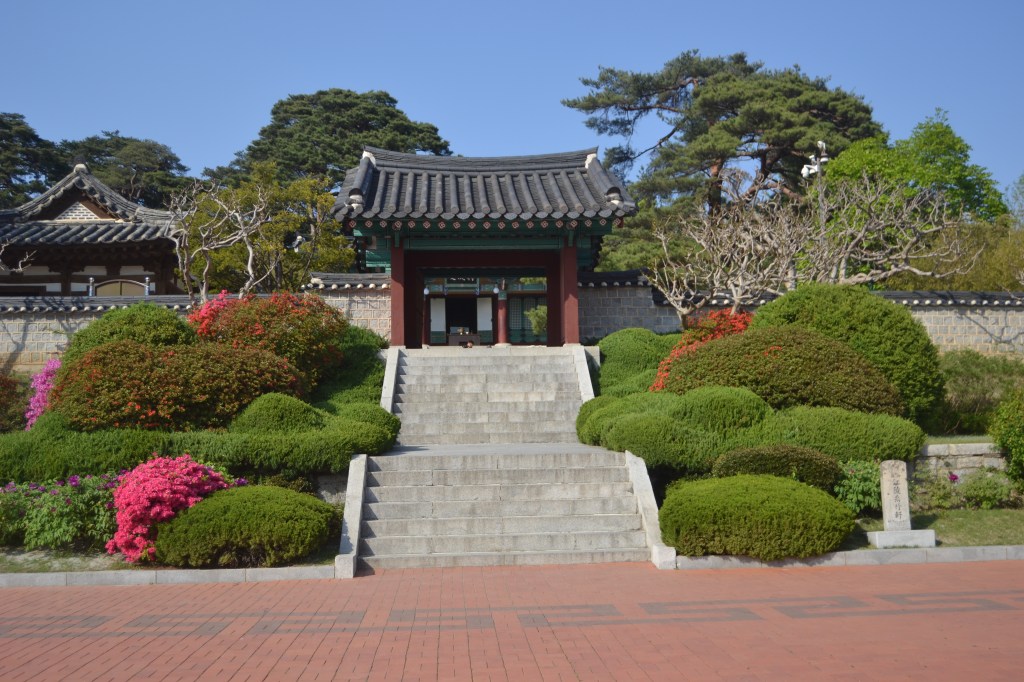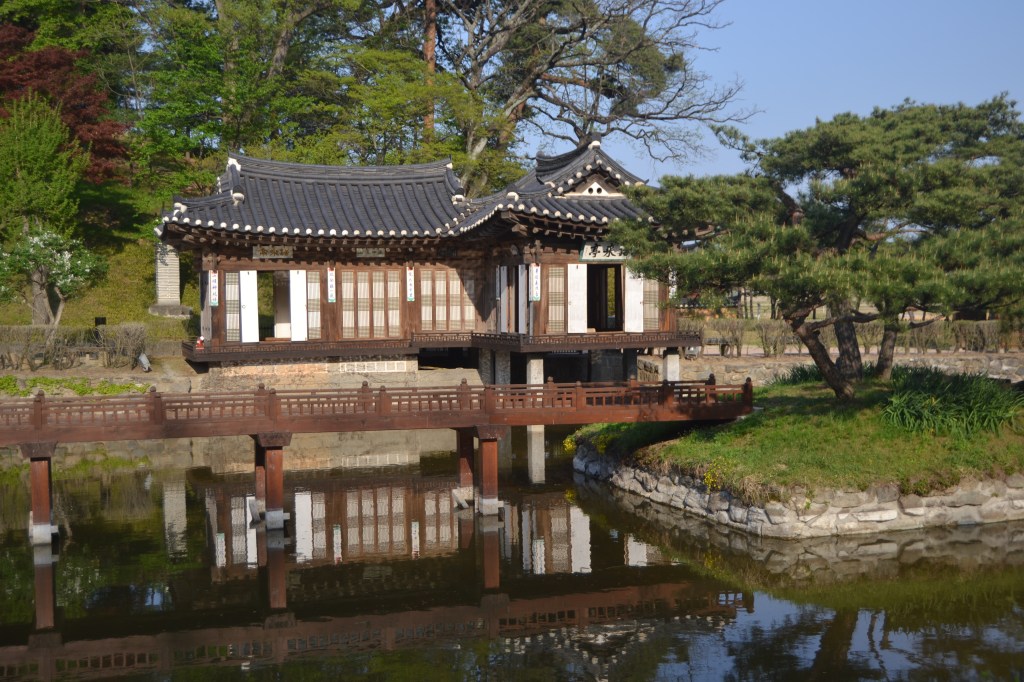The route from the station to the guest house looked straightforward enough. Cross the roundabout, down the main road. Last side-street on the left before the bridge, then take the first right.
The 202 and 303 buses ran between the Intercity Bus Terminal and the railway station. Just make sure to check that the destination board read 시내 (downtown) and not 경포 (Gyeongpo).
A 202 appeared at the top of the hill and pulled into the stop, then a 303, then a few more of each. None was heading 시내. The passengers from the Intercity bus from Gyeongju thinned out until I was the only one left. Other Intercity buses came in and disgorged their passengers and they, in turn, bundled into buses and taxis, got picked up by friends or set off on foot down the road.
The train station would have been a perfectly sensible point of reference had it not been torn down to make way for a new line since my guidebook had been published. I would find that out later, though.
The tourist information centre gave me a route map and circled the stop nearest the guest house. It was on a street without obvious landmarks but I got there by counting off the stops on the map.
I should have taken another bus to Ojukheon House after I had dropped off my stuff but set off walking instead and was committed by the time I realised how far it was. It was a boring route with nothing to see except concrete and road signs and petrol stations.
Ojukheon was the home of the sixteenth century artist, Shin Saimdang, and her son, the Confucian scholar, Yi I. Neither is exactly a household name in the West but they are celebrated enough locally to appear, respectively, on the 50,000 and 5,000 Won notes.
The walls are surrounded by coiffured bushes and bursts of azaleas in purple, pink and red. Two flights of steps lead through a gateway into the complex of wood-framed houses topped with swooping tiled roofs.
Further up the road, and further than I thought, is Seongyojang House which is an eighteenth century complex of hanok* houses set into woodland studded with pine trees and overlooking a lotus pond.
After trooping round the houses and up through the trails in the woodland and looking back down on the complex, I did not much relish the long walk back to the guest house, so carried on up the road to the beach. It was, yet again, a much longer walk than expected but I eventually came to a stop for the 202 bus.
First thing next morning, I walked to the building site where the station used to be and took a rail replacement bus to Gangdong-Myeong, where the military stands ready for when the shooting starts again.
So far as the rest of the world is concerned, the Korean War ended half a century ago: a little-read chapter of a Cold War which itself is fading in the popular memory. But there was only ever a ceasefire agreement, never a peace treaty. The international forces fighting on either side went home, but the hostility between the two Koreas remained as hostilities went into uneasy stasis.
The road to the beach is an agglomeration of tank traps, razor wire, sentry posts and heavily-armed patrols. At the optimistically-named Unification Park, there is an old US warship and a North Korean spy submarine which snarled up on rocks nearby in the Nineties and triggered an urgent manhunt. One of the crew remains unaccounted for.
But the bellicose air evaporates at Jeongdongjin Beach at the bottom of the hill. Turquoise waves froth onto a pleasant stretch of sand. There are seafood stalls, a scenic train and a whimsical hotel in the shape of a cruise ship at the top of a hill.
Back in central Gangneung in the afternoon, I walked the five-mile trail around Gyeongpo Lake which meanders through grasslands, between pine trees, along boardwalks, past flowerbeds sculptures and statuettes, and from there up to the beach where I lazed until the light started to fade.
I stopped to eat at one of the seafood restaurants which line the road along the beach and then took the bus back to the guest house.
Maybe it is was the Kloud beer which I washed the fish down with, but the journey seemed oddly exhilarating as the driver flung the bus round the corners and a warm breeze wafted the through the windows and the neon of the night shimmered from the facades of the buildings.
I had allowed two weeks to make my way up South Korea from Busan to Seoul but that was tight and I was pushed for time at each stop on the way. I had to press on the next morning to Sockho.
© Richard Senior 2020
* traditional wooden houses





